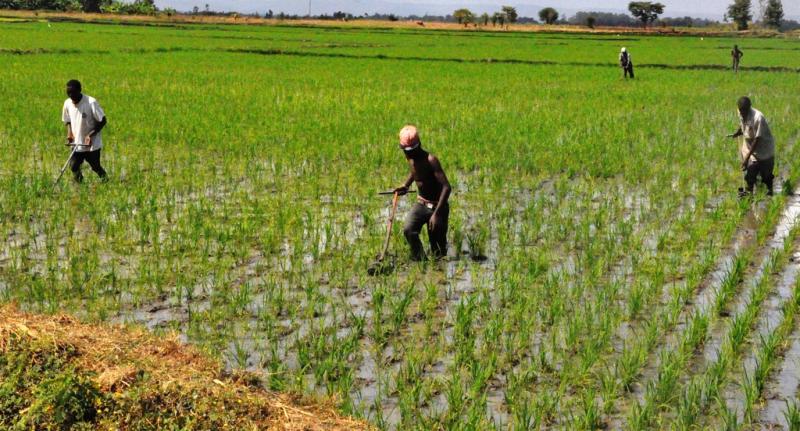More than 300 farmers in Thiba, Mwea were treated to training by stakeholders in mid-November in a bid bridge the shortfall of rice in Kenya which stands at 337,200 tons annually. The region accounts for 80 per cent of the total rice produced in the country.
Led by Kenya plant Health inspectorate Service (KEPHIS) who has the mandate in seed quality assurance, stakeholders organized a field day at Thiba to train farmers on the benefits of using certified seeds to establish their crops for higher yields and better profits.
According to KEPHIS, the informal sector in Kenya accounts for about 60-70 per cent of most seeds planted by farmers across the country. These seeds are usually uncertified therefore denying farmers the chance to maximize yields in their farms.
“KEPHIS is concerned that many farmers are recycling their own rice grains as seed instead of purchasing certified seeds,” said Simon Kibet, the General Manager, Seed Quality Assurance.
“I urge farmers to consider the profits they can get from using certified seed instead of concentrating too much on the cost of certified seeds. KEPHIS has now released several hybrid rice varieties which require only six kilograms to plant one acre due to the wider space requirement. The hybrid seeds can yield as much as 60 bags per acre,”
Related content
How to stop deadly rice disease
Drought resistant rice key to food security
Rice farmers increase sowing speed with new technology

Farmers at Mwea rice irrigation scheme. Courtesy
The other stakeholders collaborating with KEPHIS were other government agencies KALRO Mwea and National Irrigation Board, Mwea rice growers’ cooperative multipurpose society (MRGM) and agrochemical companies Bayer and Syngenta.
Geoffrey Githinji, a farmer in the area and MRGM chairman Joseph Gathimba noted that rice had performed very well this year and a bumper harvest is expected. They attributed the good yields to the availability of adequate irrigation water due to the high rainfall experienced during the year.
“However that there are new diseases that are threatening our crop such as blast and Bakanae disease which were observed in the ratoon crop this year,” said Gathimba.
Rice blast disease normally causes loss yields of 60 to 100 per cent.
Farmers in the region currently grow pishori rice with up to 26,000 acres under cultivation. The cash crop fetches Mwea farmers more than six billion shillings every year.
Kenya produces 112,800 metric tons of rice against a demand of 450,000 tons according to the Ministry of Agriculture and Irrigation.
In 2017, rice production in Mwea dropped from 830,000 bags in 2016 to 498,000 bags thus pushing rice prices up by 38 per cent. It also saw the value of rice imports increase from Sh15.89bn to Sh6.6bn
“The irrigation board would continue to help farmers to achieve higher yields by providing high quality certifying seeds at MIAD station and improving the infrastructure of the irrigation scheme,” Vincent Kipngetich, NIB manager.
Administrative Secretary in the Ministry of Agriculture and Irrigation Hamasa Kellow said the government is keenly studying ways of achieving sufficiency in rice production with an aim of producing all the rice consumed locally by 2030.
“The government aims to achieve sufficiency by increasing the area under irrigation producing rice, increasing production per acre and promoting production of rain-fed NERICA varieties. We are also focusing on mechanization of the rice production process,” said Kellow.
Rice ranks as the third most important cereal after wheat and maize in Kenya and contributes 20 per cent of the total calories intake by human beings.
















Comments powered by CComment